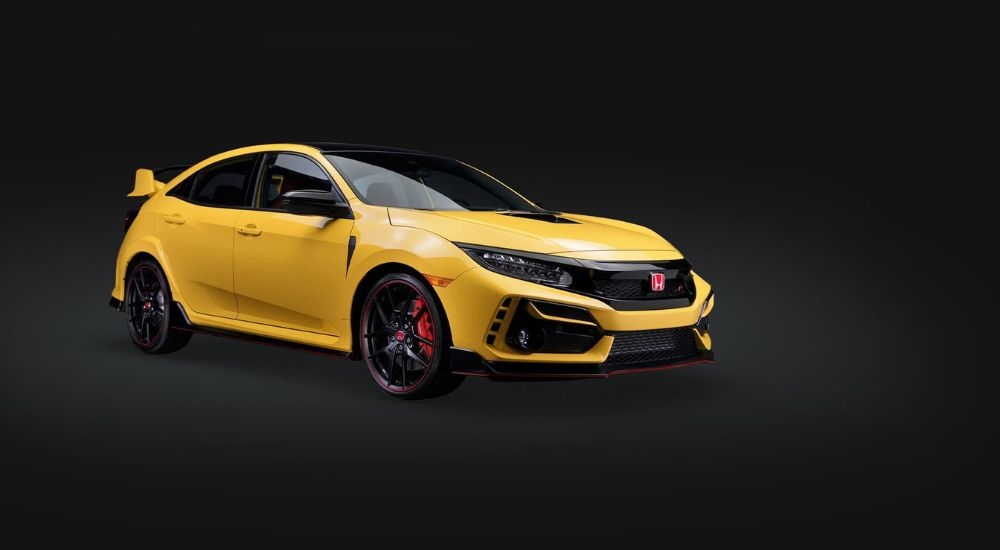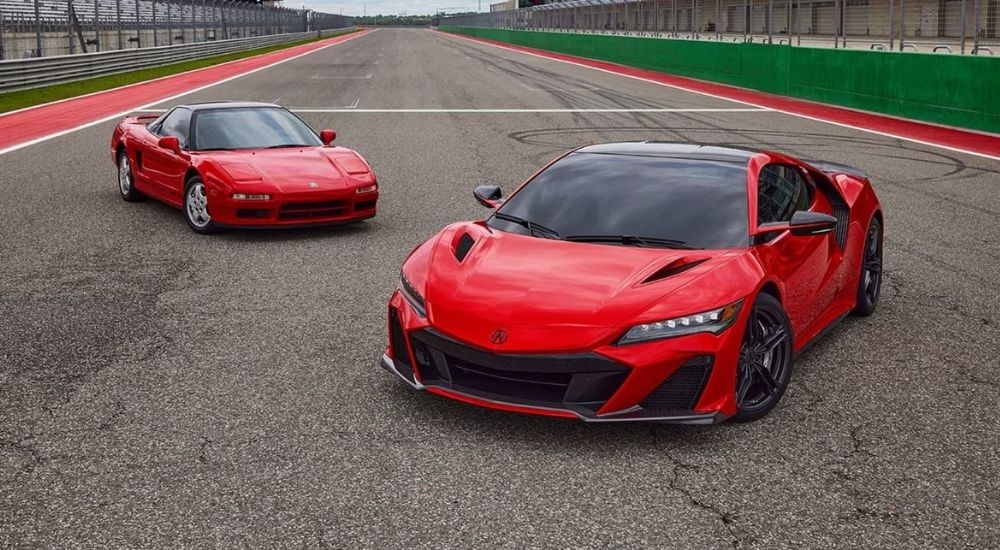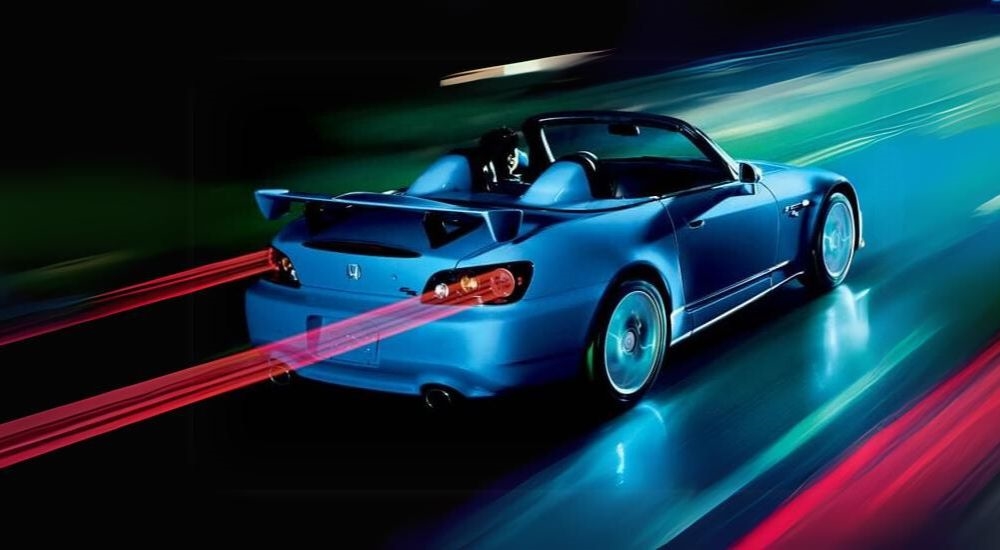
There is no shortage of great Honda cars to find here at Klein Honda, your Honda dealer near Shoreline, WA. This Japanese carmaker has a way of turning hunks of metal into truly inspiring designs. But what are the most legendary models that Honda has produced? It was difficult to narrow it down to our top five, yet somehow, we did. So, which five made our list? You will just have to read on and see for yourself!
#1 – Honda Prelude Type SH
Honda makes it quite difficult for brand enthusiasts to choose a favorite because there are so many gems that come from the minds at Honda headquarters. One such gem is the Prelude Type SH. First released in the seventies, it took a while for the Prelude to amass its droves of fans. Much of its admiration is thanks to the Type SH which hit the scenes for the 1997 model year.
The Type SH was short-lived, really short-lived, but it still managed to leave a lasting impact on the automotive community. The Prelude Type SH, which is short for “Super Handling,” is a sports coupe packed with all the elements that make Honda sports cars the best. Of course, this means that at the heart of the coupe is a 2.2-liter engine with Variable Valve Timing and Lift Electronic Control, more commonly known as VTEC. It produces up to 200 hp and 158 lb-ft of torque.
The Type SH is also equipped with the Active Torque Transfer System. Honda created the system to improve cornering by transferring torque to the outer wheel. This provides more comfortable and responsive handling. The Type SH may not have been here long, bowing out in 2001, but it definitely won’t be forgotten. Its classic styling and clever design combine some of the best elements of Honda performance cars. Plus, it’s just plain fun to drive along the shores of Puget Sound!
#2 – Acura NSX
The Acura NSX (Honda NSX outside of America) is a legendary little sports car that offers up a big helping of speed, designed to bring a smile to your face. Honda outdid itself with this one, endowing every inch with performance magic. NSX stands for “New Sportscar eXperimental,” an appropriate name for the first supercar from Japan. It was also one of the most expensive Japanese cars ever and still fetches quite a price today. The cost seems quite fair for the sheer amount of attention that went into every single aspect of the NSX.
It starts with a VTEC 3.0-liter V6 engine specially designed for the NSX. This was the first time the US was introduced to the VTEC system, and it’s safe to say it was an inspiring encounter. Its 270 hp and 210 lb-ft of torque produce a high-octane experience that will thrill any enthusiast. Another first was the use of titanium for the connecting rods. Titanium is strong but lightweight, which contributes to the engine’s 8,000 RPM redline. The body and chassis of the car were manufactured from aluminum which has a weight advantage over heavier steel. At the same time, the chassis is rigid and strong, giving it flawless handling.
If these specs weren’t enough to have you drooling, every NSX was hand-assembled. This slowed down production but did guarantee a pretty epic experience. During its fifteen-year run here in the US, the NSX saw a few major changes. One such change was the introduction of a Targa-roof option, which eventually pushed the coupe style aside. The first-generation NSX was eventually discontinued in 2005, although an equally revolutionary, if somewhat less legendary second generation was produced from 2017 to 2022.

#3 – Honda Civic Type R
The Honda Civic Type R was first made available in Japan in 1997. However, it wasn’t offered here in the US for another twenty years. That’s okay, though; it was worth the wait. This five-door hatchback is a force to be reckoned with.
The tenth-generation Civic Type R came out of the gate fighting, setting the racing world ablaze––figuratively, of course. It set multiple lap records and thrilled audiences by dashing the Nürburgring front-wheel drive lap record by an incredible seven seconds. But this should come as no surprise since the Type R line has a history of excellence.
The 2017 Civic Type R maxes out at 306 hp thanks to a turbocharged 2.0-liter VTEC engine. Equipped with a six-speed manual transmission, the Civic Type R is a dream machine. Honda, in its infinite wisdom, equipped the Type R with a secret weapon that makes the Civic Type R not only great for racing down the track but also for cruising on the highways around Seattle. This secret weapon is called the dual-axis front suspension.
The dual-axis front suspension is designed with a damper fork, which splits the knuckle from the strut. This design moves the steering axis closer to the center of the wheel, minimizing center offset. A large center offset can be a problem in front-wheel drive vehicles with lots of power. The power can cause the vehicle to pull to the side, a phenomenon known as torque steer. By improving the suspension design, torque steer is almost eliminated, providing a smoother and more confident driving experience.
In 2021, a limited edition of the Civic Type R was released, featuring some performance enhancements. The most impactful change came from removing weight by cutting back on specific components that could be done without. Lightweight wheels were also added, and the Adaptive Damper System was retuned to account for the weight reduction. The end result was magic on the track.
#4 – Acura Integra Type R
The 1990s were a good time for Honda enthusiasts, and things got even better with the introduction of the Integra Type R. Like the NSX, the Integra was sold under the Acura brand here in the US, but it is still a Honda through and through. The Type R was a new addition to the already popular Integra line-up, with a few performance-focused tweaks. These tweaks made the Integra Type R a classic that is still favored by motor enthusiasts today.
The Type R features a VTEC 1.8-liter inline-four that makes 195 hp. To improve performance, the intake and exhaust ports were hand polished. Through hand polishing, any potential flaws from rough casting are avoided, minimizing airflow disruption. This is in addition to a larger exhaust which also improves airflow.
Thanks to its smaller and more aerodynamic size, the Integra Type R experiences less drag, allowing it to cut through the air with less resistance. It was also designed to generate downforce, keeping it planted on the ground as it whips around the track. To further improve response when running at top speed, the suspension was calibrated based on racetrack performance. With such speed and power, braking needs to be perfected as well. This is achieved by using larger disk brakes which have more surface area, resulting in reduced brake fade when pushed hard.
The Integra Type R became available in the United States in 1997, a few years after it was launched in Japan. The Integra Type R was the first Type R to become available in the US under the Acura name and only lasted until 2001, with a one-year hiatus near the end of its run here in the States. This could be in part due to the lack of amenities, such as air conditioning and sound-dampening materials, which were removed in pursuit of a lighter overall weight. While it may not have been the most comfortable vehicle to plan a road trip in, that has not stopped it from becoming a fan favorite.

#5 – Honda S2000
In 1999 Honda showed up to the performance car game with a car no one could resist, and that car was the Honda S2000. This small two-door roadster possesses more grit than most performance cars to this day. The S2000 went on sale in the Fall of 1999, blowing away consumers with its high-performance handling. Designed as a limited-edition model to celebrate Honda’s 50th anniversary, the S2000 is a fine example of Honda’s innovative spirit and engineering ingenuity.
Its design includes a 2.0-liter inline-four engine that was specially calibrated to provide a monstrous roar while keeping emissions to a minimum. More importantly, at least to a gearhead, it had the highest output per liter of any naturally-aspirated production car until the release of the Ferrari 458 Italia a decade later. This achievement results in the aluminum block maxing out at 240 hp and 154 lb-ft of torque.
An even 50/50 weight distribution provides incredible handling, with a front-engine, rear-wheel drive set-up that splits the weight. The S2000 is designed using a unique “X-bone” frame that runs down the center adding to the rigid design, and the double wishbone suspension handles like a true race car. Paired with a six-speed manual transmission, hitting the 8,800 RPM redline is a breeze.
The 2004 model year marked some changes for the S2000. A larger 2.2-liter engine allows for more power lower in the rev range. While maximum horsepower stayed the same, the max torque bumped to 162 lb-ft. The suspension was optimized for on-road driving, while the frame was made more rigid, providing even better cornering and handling for Shoreline drivers looking to push the S2000 to its limits.
In 2008 Honda added the S2000 Club Racer to the mix. The CR was designed for those who enjoy racing, making it perfect for a fun weekend at the track. Honda even entered the CR into the 25 Hours of Thunderhill endurance race just to show off its abilities. Unfortunately, the next year’s model would mark the end of the S2000. The S2000 stayed in production much longer than originally intended, largely thanks to the overwhelming response from Honda enthusiasts.
